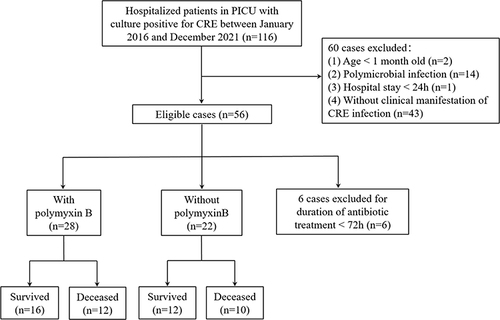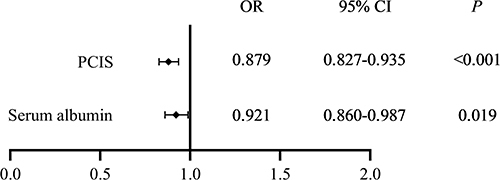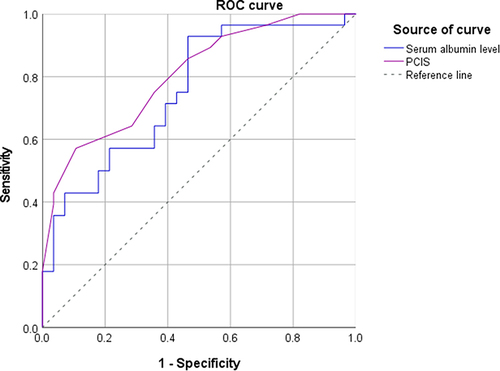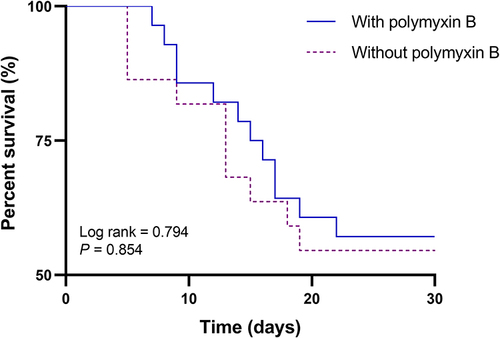Figures & data
Table 1 Patient Characteristics
Figure 1 Flow chart of included patients with CRE infections. CRE, carbapenem-resistant Enterobacteriaceae; PICU, pediatric intensive care unit.

Figure 2 Cox regression of factors associated with 30-day mortality. HR, hazard ratio; CI, confidence interval; PCIS, pediatric critical illness score; MODS, multiple organ dysfunction syndrome.

Figure 3 The area under the area under the curve of risk factor for the survive of CRE infections. CRE, carbapenem-resistant Enterobacteriaceae; PCIS, pediatric critical illness score.

Table 2 Comparison of Characteristics and Treatment Between Patient with and without Polymyxin B
Table 3 The Impacts of Different Therapy on the 30-Day Mortality

